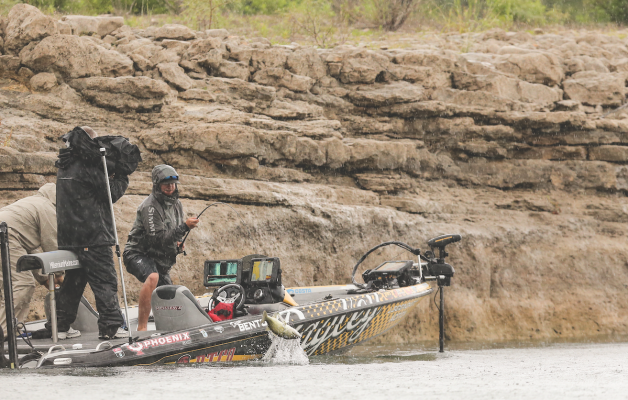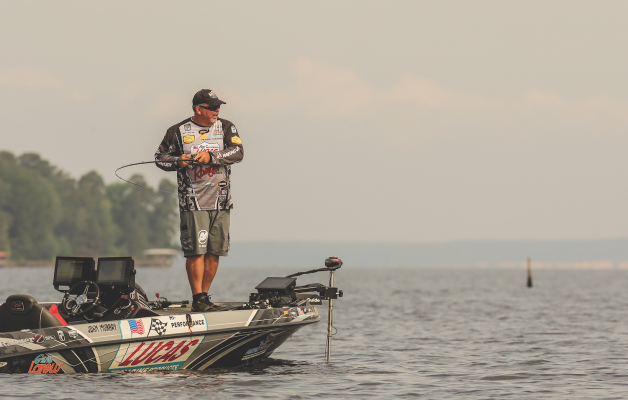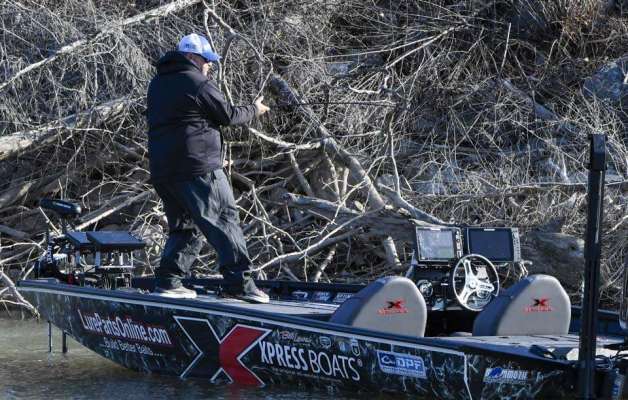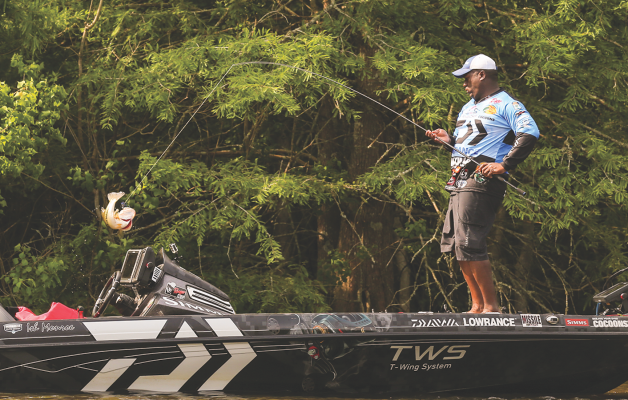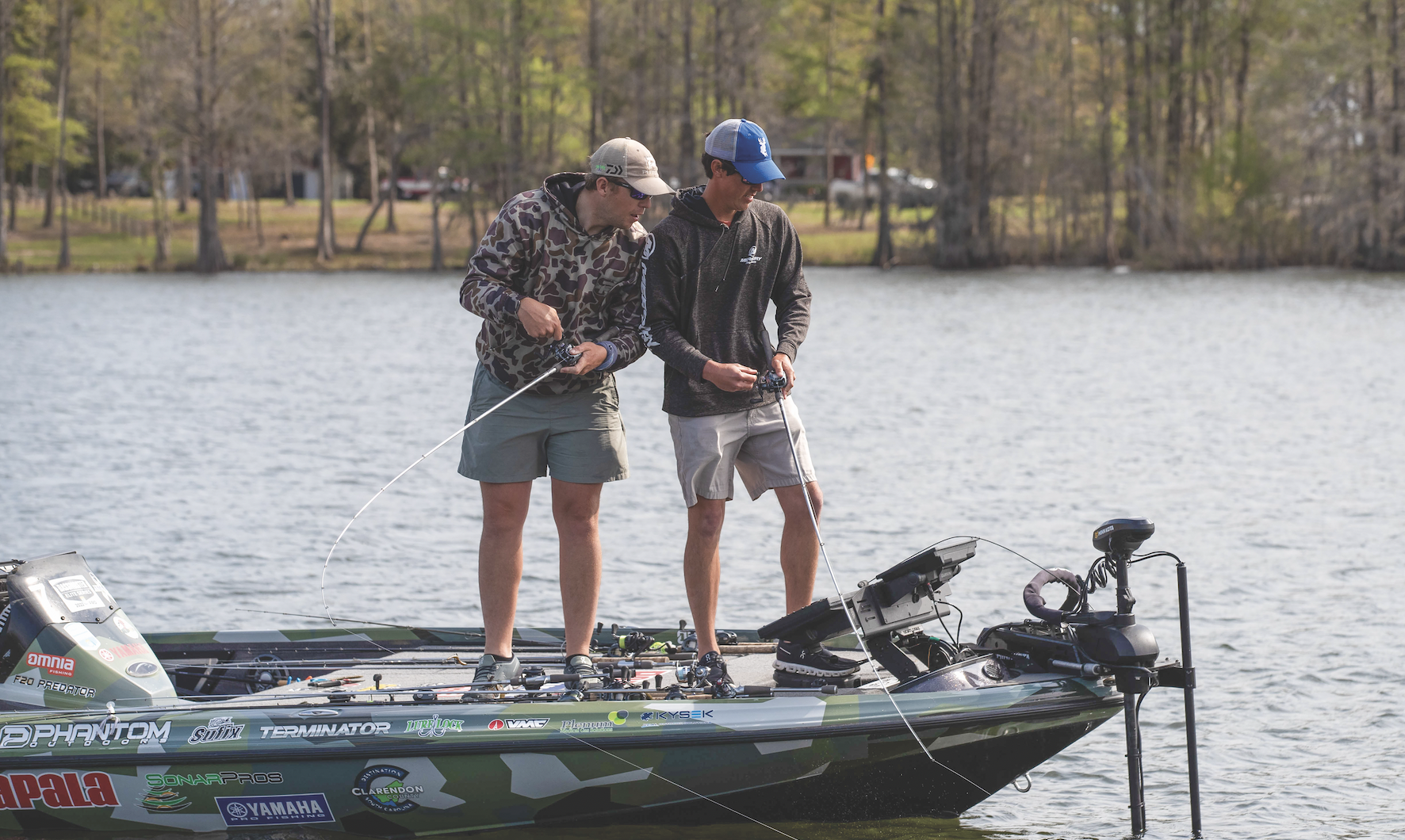
On a warm, late-spring day on the marsh lakes at Grosse Savanne Lodge in south Louisiana, Justin Hamner began the day by smashing the bass on a frog, catching impressive numbers of bass before lunchtime.
The problem: Hamner was catching bass in the 1- to 4-pound range and wanted to find a way to improve his quality. So, with a couple of hours left to fish, Hamner moved to a little pond with emergent and submergent grass connected to the main-creek channel by three canals and turned on his Garmin LiveScope.
What followed in the next hour and a half was a big-fish beatdown, as Hamner landed around 27 pounds with his best five bass, as well as several other fish from 3 to 5 pounds. His biggest weighed just under 7 pounds, but his LiveScope screen revealed several that were even bigger that couldn’t be coaxed into biting.
“When you see how specific of a spot they are sitting in, you could have gotten lucky and figured out that cast, but [using LiveScope] takes the guesswork out of it,” he said. It’s a phenomenon that has spread like wildfire throughout all
levels of bass fishing since young South Carolina pro Patrick Walters used LiveScope and a jerkbait to win the Bassmaster Elite Series event on Lake Fork in 2020 with 104 pounds, 12 ounces. It was one of the more impressive displays in modern bass fishing history — and one that brought about changes even Walters says he wasn’t prepared for.
“Truthfully, it’s something I wish could have stayed secret a little longer,” Walters said, laughing. “It gives you this completely new way to fish but also strengthens the ways you used to fish. “Just think about it: You literally have eyes under the water with it. Out to 100 feet, I can see a stump or some shallow grass where I couldn’t see it before because the water’s deeper or colored.”


